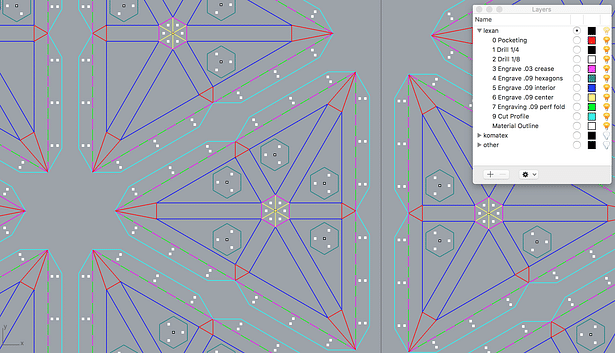
Geometric Jellyfish is a
design to fabricate a boundary that defines space while utilizing
folding methodologies to consider form, material, and construction.
The group was tasked to identify an application for folding that
considers performance and expression in relationship to
technologically driven fabrication techniques. Beyond developing a
physical manifestation of design, the goals for this project were to
demonstrate a synthesis of formal, material, and construction
techniques, competence in machine operations, and the ability to work
collaboratively.
Status: School Project
Location: New Orleans, LA, US
My Role: Student; Group project with Katie Nguyen & Charles Weimer
Additional Credits: Tulane University, Digital Fabrication (Fall 2014)


